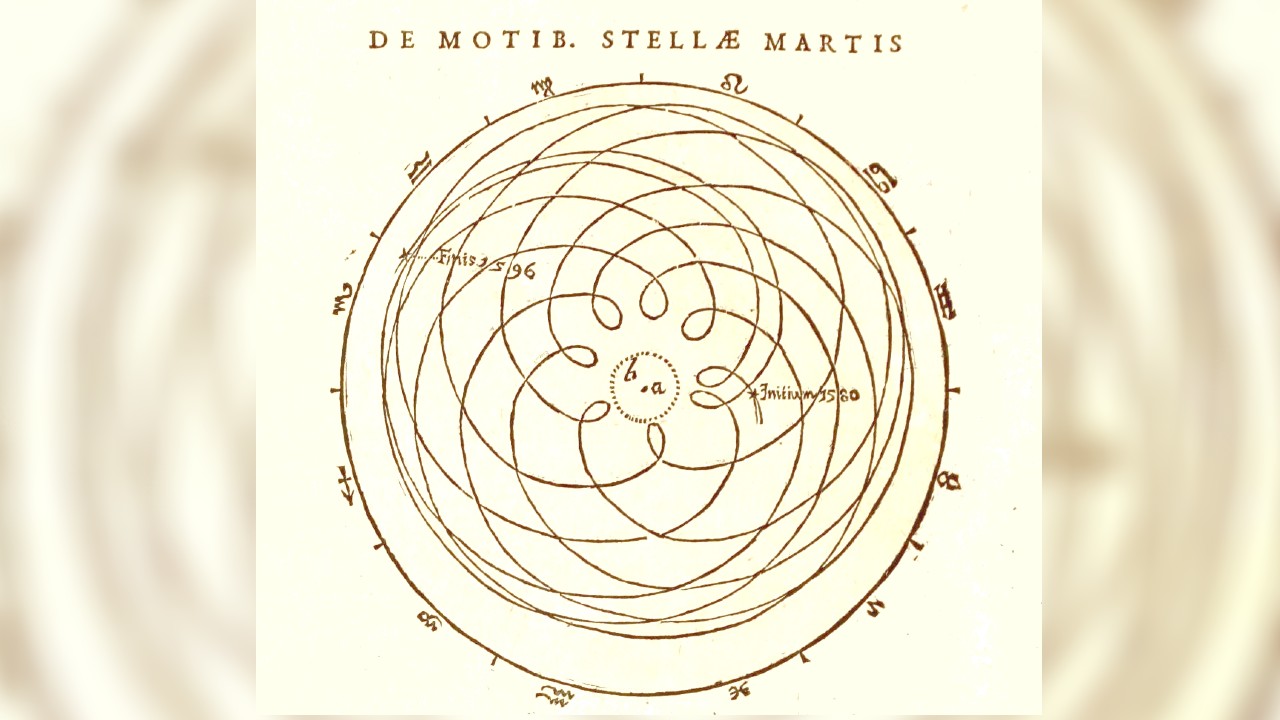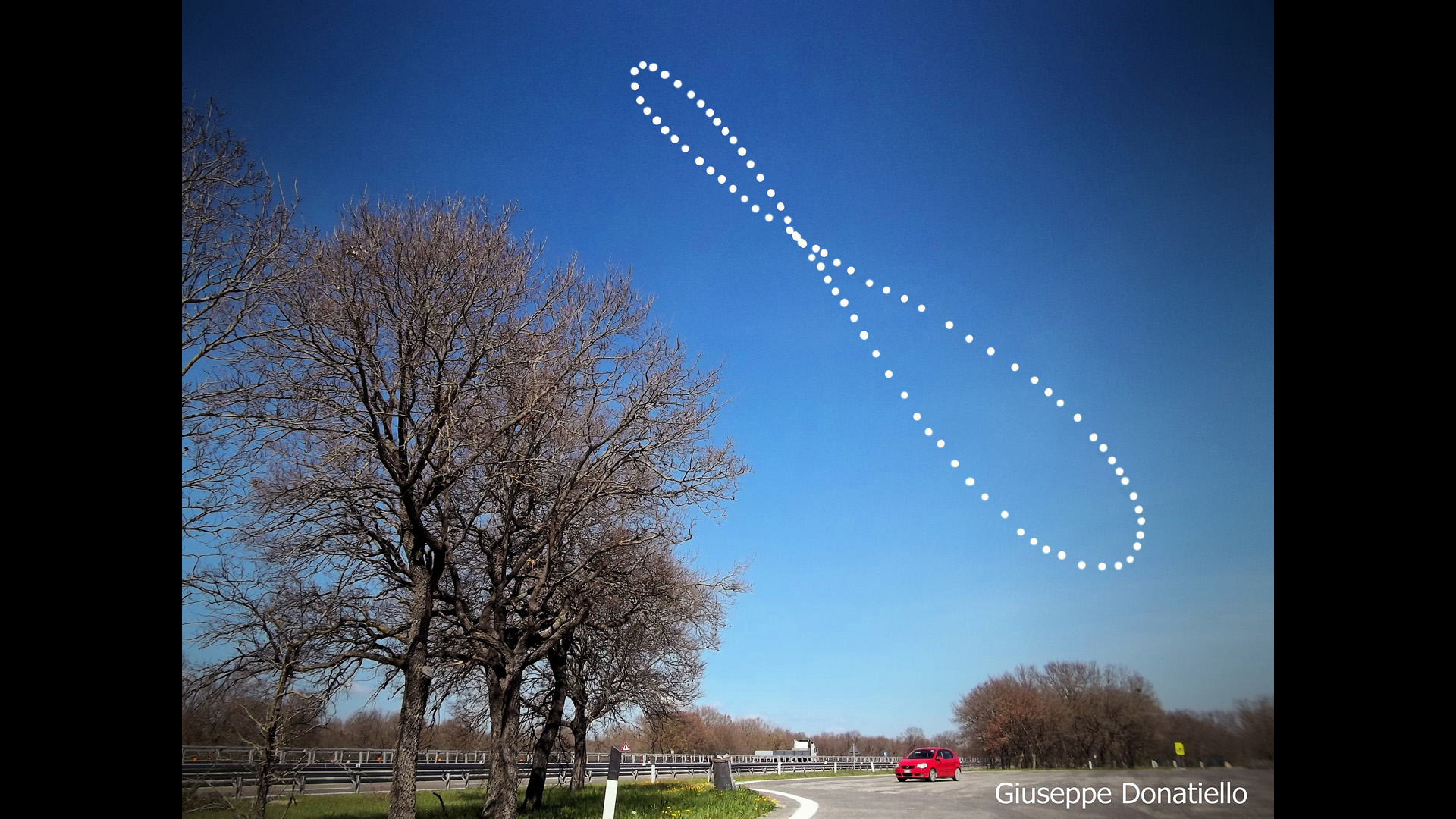Perihelion: What is it and when does it occur?
The sun's distance from Earth changes throughout the year but it has nothing to do with the seasons.

The term "perihelion" describes the point in an astronomical body's orbit where it is nearest to the sun. Derived from the Greek words peri (around) and helios (sun), the word reflects its meaning.
In contrast, the term "aphelion" refers to the point where the orbiting body is farthest from the sun.
When is Perihelion?
Earth will reach its closest point to the sun, known as perihelion, on Jan. 3, 2026, at 12:15 p.m. EST (1715 GMT).
Orbits of natural bodies in the universe are usually not perfectly circular — they are elliptical. Some orbits are ever so slightly elliptical (like a somewhat squashed circle, or, in astronomical terms, an orbit with low eccentricity), whilst some appear rather flattened (highly eccentric orbits).
The sun doesn't sit idly in the center of these ellipses at equal distance from their farthest points. It actually follows its own tiny elliptical orbit around what is called the center of gravity (the barycenter) of the system, the sun and the orbiting planets. This barycenter is usually not equal to the central point of the ellipse. It tends to be somewhat offset toward one side of the ellipse. If you draw a line through the barycenter to connect the most distant points of the orbit of the smaller body, one part of the line will be longer (the apsis) and one will be shorter (the periapsis). The point where the periapsis intersects with the body's orbit, is the perihelion, the closest point in the body's orbit to the sun. (The point at the end of the apsis is the aphelion).
For some bodies, like all of the planets of the solar system, the difference between the perihelion and aphelion is quite negligible. For others, many comets and asteroids, for example, the difference can be huge.
Related: The sun as you've never seen it: European probe snaps closest-ever photo of our star
Satellites orbiting the sun also have perihelions, which are carefully designed with respect to the purpose of the mission. NASA's Parker Solar Probe, for example, swoops just a few million miles away from the sun's surface, gathering data about the fiery environment there. But then retreats beyond the orbit of Venus to "cool down".
Breaking space news, the latest updates on rocket launches, skywatching events and more!
The European Solar Orbiter mission makes less aggressive sorties toward the star, to only about one-third of an astronomical unit (AU).
An astronomical unit (AU) is the average distance between Earth and the sun, which equals 92,955,807 miles or 149,597,870 kilometers.
The reason for that is that Solar Orbiter's goal is to take images of the sun. Even at that distance, the spacecraft experiences temperatures of over 900 degrees Fahrenheit (over 500 degrees Celsius) and it took a lot of clever engineering to make a camera work there.
Earth's perihelion
Earth's perihelion takes place in early January. The exact date shifts because the calendar year doesn't perfectly match Earth's orbit.
In 2025, perihelion occurred at 8:28 a.m. EDT (1328 GMT) on Jan. 3, according to Time and Date. At that time, Earth was 91,405,992 miles (147,103,686 kilometers) away from the sun.
The difference in Earth's distance from the sun at perihelion and aphelion is about 3 million miles (5 million km). That is a little over 3% of the average sun-Earth distance. The effect of this seasonal variation on the planet's climate is negligible; Earth's seasons are dictated by the tilt of Earth's axis toward the planet's orbital plane.
How did astronomers discover Earth's perihelion?
How did astronomers discover that there is such a thing as the perihelion and aphelion? Did they realize the sun was bigger or smaller during certain periods of the year? The answer is no.
Edward Bloomer, an astronomer at the Royal Observatory in Greenwich, England, explains that this discovery has more to do with the observation of orbits of other planets.
"In about 1604, Johannes Kepler fitted an ellipse model of Mars' orbit to observations of Mars," Bloomer told Space.com. "He came up with the first law of planetary motion that states that planets orbit the sun on an ellipse with the sun being the focus on this ellipse."
There were other hints during the middle ages that something might be off with the sun, Bloomer said. Tracking the motion of the sun was for millennia the default mode of timekeeping. The sun was the focal point of the lives of ancient societies, and keen observers eventually noticed that the sun was behaving in odd ways.
"They were already talking about the difference between the solar day and the ideal day, the average value of that," said Bloomer. "Things were running behind and ahead, which, as we later learned, is because of the changes of the speed at which Earth orbits the sun due to the elliptical nature of its orbit."
Analemma
What our ancestors could figure out was the analemma, the plot of the sun's position in the sky at noon observed from a single spot on Earth over the year.
"The analemma basically takes the shape of the figure eight," said Bloomer. "But the two lobes are not equal, both in terms of their height and their width. And if you know your position, and you observe the sun, then the difference in this path can be traced out and allows you to measure the eccentricity of the orbit and determine its perihelion as well."
Other planets' perihelions
All solar system planets have fairly circular orbits with relatively minuscule differences in their distance from the sun at aphelion and perihelion. Venus and Neptune follow the most circular orbits. The difference in the distance from the sun at these two points is only 0.10 AU for Venus, which orbits on average 0.7 AU from the star.
For Neptune, in its wide and distant orbit at about 30 AU, the difference between the perihelion and aphelion is 0.5 AU, according to the Royal Greenwich Observatory.
Dwarf planet Pluto, on the other hand, has a fairly squashed orbit. Mercury, the closest planet to the sun, has the most eccentric orbit, with the difference between the distance at perihelion and aphelion being 0.17 AU. That is quite a lot for Mercury, which orbits on average at only 0.39 AU.
"It's the gravitational effects of all the other bodies in the solar system that affect the shapes of the orbits," Bloomer said. "But also the sizes, shapes, velocities and rotation speeds of the objects themselves."
Perihelion precession
On Earth, perihelion and aphelion at one point coincided with the winter and summer solstice. But that was back in 1246, according to Time and Date. Due to something that is called orbital precession, there is a gradually opening gap between the solstices and the peri and aphelions. By the year 6430, perihelion will fall on the March equinox (March 20), according to Time and Date.
Orbital precession is essentially a gradual shift of the perihelion point around the sun. Like a wobble of a spinning top, the perihelion point slides around the barycenter with every subsequent orbit.
The perihelions of all planets precess, which can mostly be explained by Isaac Newton's theory of gravity as a result of the pull of all other planets and moons in the solar system on one another, according to the Berkeley Lab.
There is, however, one exception that gave astronomers a bit of a headache, and that is the precession of the orbit of Mercury.
Mercury perihelion precession and the general relativity theory
Simply put, the precession of Mercury's orbit based on Newtonian calculations is slower than what astronomers actually observe (5,557 seconds of arc per century compared to the actual 5,600 seconds of arc per century), according to Berkeley Lab.
Various proposals were put forward in the past to explain the discrepancy, including the existence of another planet, called Vulcan, even closer to the sun, Bloomer said. But eventually, Albert Einstein's theory of general relativity solved the conundrum.
"This was one of the real successes of Einstein's relativistic framework," said Bloomer. "It was one of the three big tests of general relativity. It took a decade, but he could explain what Mercury's perihelion is doing without needing anything else in the system."
Comet and asteroid perihelions
Unlike the fairly circular planetary orbits, comets and asteroids tend to follow orbits with very high eccentricities. They emerge from the farthest reaches of the solar system, way beyond the orbit of Neptune, then zip past the sun before disappearing again for centuries.
Due to their irregular shapes and small sizes, these bodies are much more susceptible to the gravitational influences of planets and other larger bodies in the solar system, which makes their orbits rather irregular. Their perihelions change significantly from orbit to orbit, and sometimes, they leave the solar system altogether, accelerated by the gravity of either Jupiter or the sun itself, said Bloomer.
For comets, the period around the perihelion (during those orbits when they manage to dive deep toward the center of the solar system) is the time of their greatest glory. The heat from the sun in the central parts of the solar system melts the ice the comets are made of and triggers spectacular releases of gas that skywatchers observe in awe as the trademark cometary tail. After a few weeks in the spotlight, the comets disappear only to return decades or centuries later, if at all.
The other "peris"
Moons and satellites that primarily orbit other bodies in the solar system, have their own closest points to their parent body. For objects orbiting Earth, that point is called perigee. Jupiter's moons and probes around the gas giant call their closest approach perijove.
Additional resources:
Read what Time and Date has to say about the perihelion and aphelion or watch this Khan Academy video explaining the perihelion precession.
Bibliography:
NASA, Earth at Perihelion https://science.nasa.gov/science-news/science-at-nasa/2001/ast04jan_1
Royal Museums Greenwich, Solar System Data https://www.rmg.co.uk/stories/topics/solar-system-data
NASA, The Science: Orbital Mechanics https://earthobservatory.nasa.gov/features/OrbitsHistory/page2.php
Park S. et al, Precession of Mercury's Perihelion from Ranging to the MESSENGER Spacecraft, The Astronomical Journal, February 2017 https://iopscience.iop.org/article/10.3847/1538-3881/aa5be2
Follow Tereza Pultarova on Twitter @TerezaPultarova. Follow us on Twitter @Spacedotcom and on Facebook.

Tereza is a London-based science and technology journalist, aspiring fiction writer and amateur gymnast. Originally from Prague, the Czech Republic, she spent the first seven years of her career working as a reporter, script-writer and presenter for various TV programmes of the Czech Public Service Television. She later took a career break to pursue further education and added a Master's in Science from the International Space University, France, to her Bachelor's in Journalism and Master's in Cultural Anthropology from Prague's Charles University. She worked as a reporter at the Engineering and Technology magazine, freelanced for a range of publications including Live Science, Space.com, Professional Engineering, Via Satellite and Space News and served as a maternity cover science editor at the European Space Agency.
You must confirm your public display name before commenting
Please logout and then login again, you will then be prompted to enter your display name.



